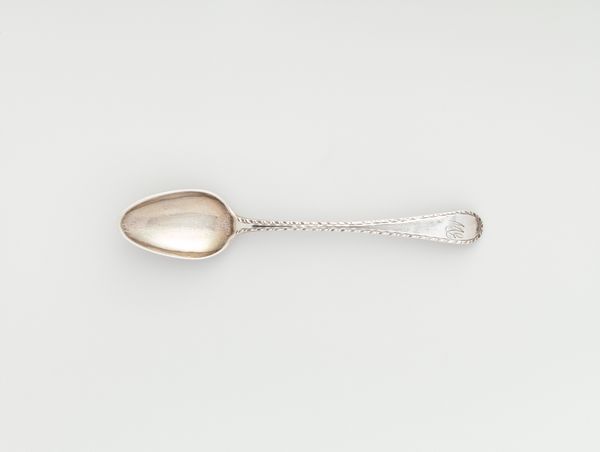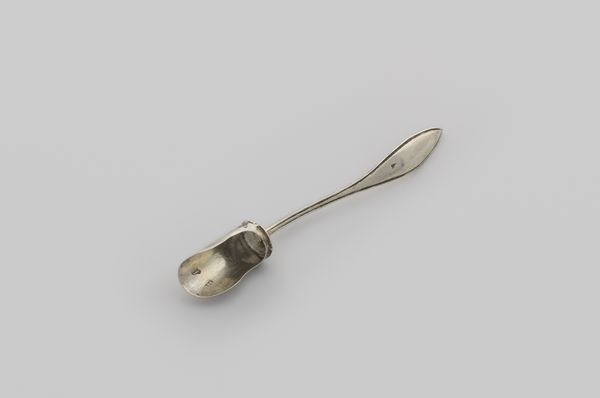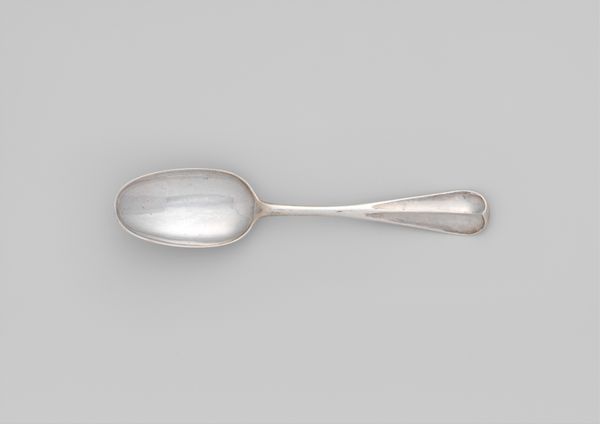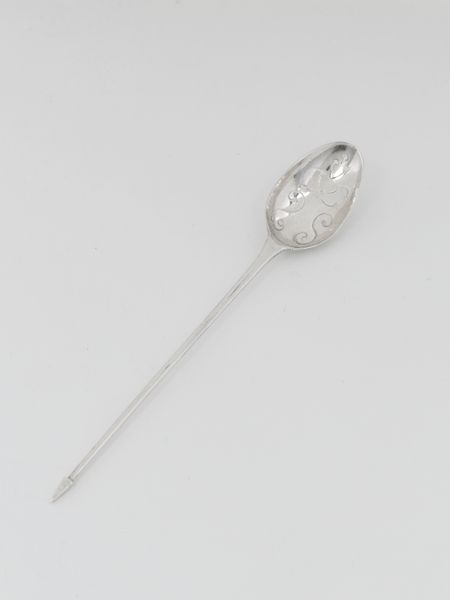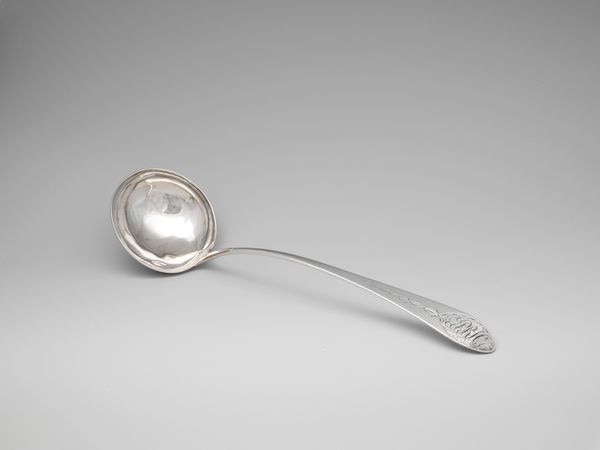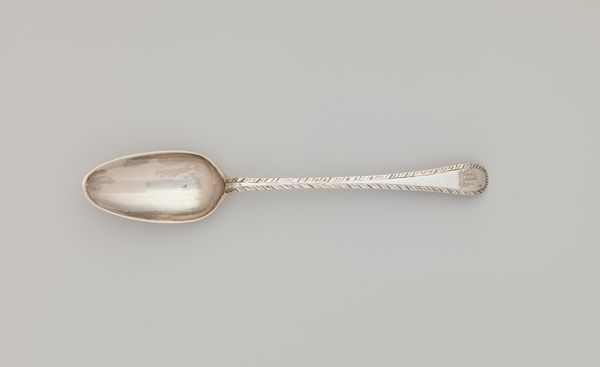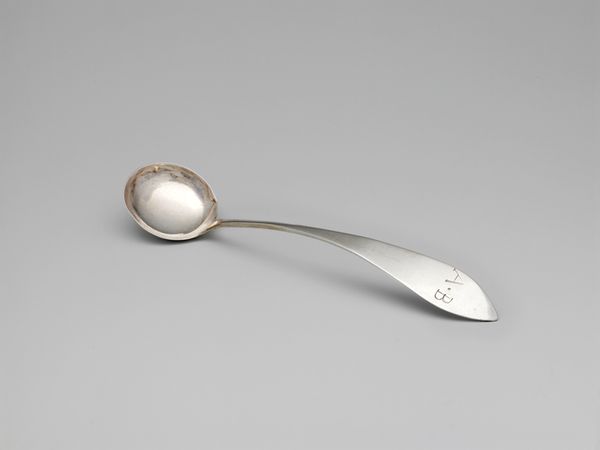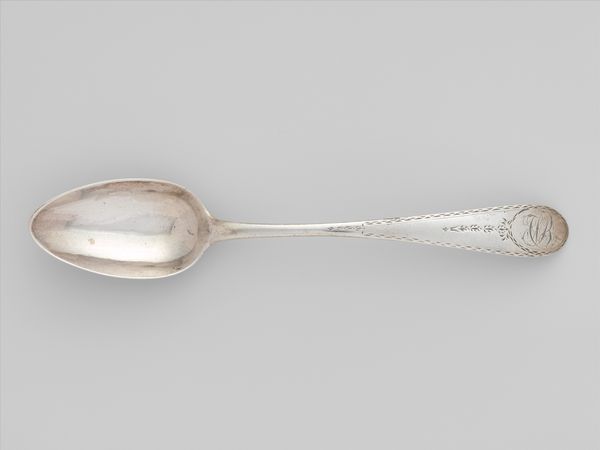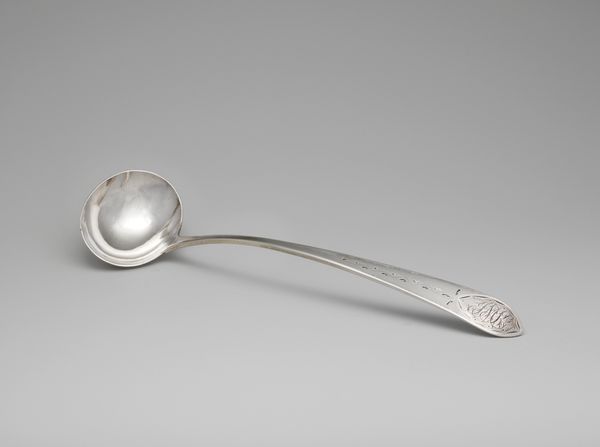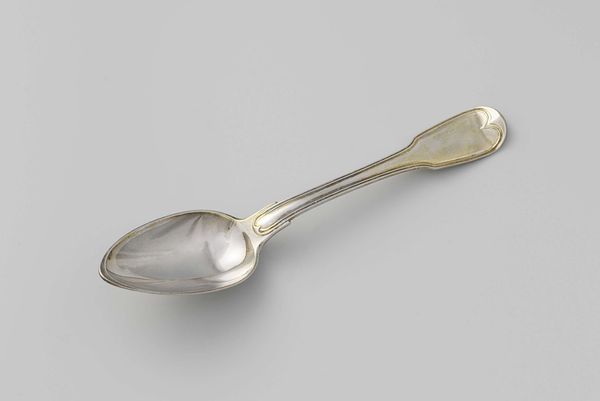
silver, metal
#
silver
#
metal
#
decorative-art
Dimensions: 2.5 × 5.1 × 15.2 cm (1 × 2 3/16 × 6 7/8 in.); 58.7 g
Copyright: Public Domain
Curator: Standing before us is a silver spoon, crafted around 1696 by Jacob Boelen. It's part of the Art Institute of Chicago's decorative arts collection. Editor: My first impression is one of understated elegance. The spoon's elongated form and the gentle curve of the bowl have a very refined presence, particularly when considering its function is purely utilitarian. Curator: It is striking, isn't it? Consider the societal context in which this spoon was created. Silverware wasn’t just about eating; it signaled status, wealth, and belonging within a specific social strata. Possessing ornate pieces such as these underscored a family's prominence in society. Editor: Exactly, the choice of silver is central. Silver objects gained value not just from material worth but as embodiments of skilled labor. We need to look closely at the techniques of the silversmith—the hammering, shaping, and the finishing, each stage would’ve involved precise skills passed through generations of artisans. Curator: The presence of the initials at the tip are interesting too. They probably belong to the original owner. Such customization elevated the spoon from mere tableware to a personalized object with layers of familial history. This spoon could become a tangible part of a family's narrative, handed down over generations. Editor: Right, the engraving becomes incredibly telling about how valued these possessions were, how they acted as carriers of identity across time. It invites thoughts on the rituals that this spoon witnessed, and even played a small part in. I imagine the meals shared, the conversations had… Curator: Absolutely, we begin to appreciate it beyond a utensil. It reflects not only personal identity, but also illuminates the historical currents of trade, wealth, and artistic movements of the era. Silver pieces like these speak volumes. Editor: Indeed, the Spoon gives form to a world where utility meets artistry, where labor becomes legacy. Curator: A fascinating journey into the past through a simple object. Editor: I couldn't agree more.
Comments
No comments
Be the first to comment and join the conversation on the ultimate creative platform.
